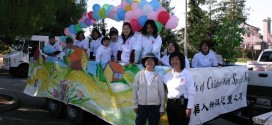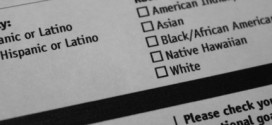By Stephen Tu
Far from feeding the stereotype of the Asian American “model minority” myth, some local Bhutanese and Burmese communities find themselves in dire states. Approximately 2,000 refugees have resettled in Washington DC, Maryland, and Virginia in the past decade. Bhutanese and Burmese refugees are among the most vulnerable Asian immigrant groups, according to a new report from the Asian Pacific Islander Scholarship Fund. These groups are the respective top two immigrant refugee groups in the United States, representing 48% of all refugees in 2012.

In a briefing on Capitol Hill, Delegate Madeleine Bordallo (D-Guam) stated that “…an overwhelming 30% of Burmese Americans live below the poverty line, compared to 13% of the Asian population living in the United States.” Del. Bordallo iterated the need to focus on education, highlighting the fact that 39% of Burmese Americans are high school dropouts, the highest of any Asian America/Pacific Islander group.
The report, a collaboration of the Asian & Pacific Islander American Scholarship Fund and the Association for Asian American Studies, indicates that Bhutanese and Burmese refugees are among the most overlooked and “invisible” Asian American populations, as they resettle in their new home. Though the factors that drove these refugees from their homelands are rooted in a complex history, these populations are facing new challenges with this new influx of immigration.

Why, then, has the plight of refugees largely escaped the attention of policymakers?
The lack of reliable data on these refugee groups until now may have played a role. Some statistical information about the Bhutanese population is placed into an “all others” category that cannot be disaggregated, a challenge familiar to Asian American activists. “We must ensure that the needs of all groups are addressed, and this starts with having accurate, reliable, and detailed data,” said Del. Bordallo. The authors of the study suggest that more research is needed on these populations, as current data sets are limited, especially on 1.5 and second generations and issues such as mental and physical health.
Several key findings may explain the challenges refugee communities face. Limited English proficiency is a socioeconomic barrier in the refugee adaptation process, and older refugees experience the greatest difficulties in educational attainment. Indeed, older refugees typically find work in low-paying jobs in industries such as meatpacking and hotel-housekeeping that offer little or no benefits, and find it difficult to improve their socioeconomic status. Moreover, the report states that those who arrive as teens or young adults also have a more difficult time adjusting.
 The authors of the study suggest several policy recommendations to address these challenges, including readily available intensive ESL training for adult refugees upon their resettlement. Special attention also needs to be paid to the teenage and young adult population regarding their educational outcomes, through intensive educational and social support to enable teenagers to graduate from high school.
The authors of the study suggest several policy recommendations to address these challenges, including readily available intensive ESL training for adult refugees upon their resettlement. Special attention also needs to be paid to the teenage and young adult population regarding their educational outcomes, through intensive educational and social support to enable teenagers to graduate from high school.
Local communities also have questions surrounding their identity as Asian Americans in their new country. Myra Dahgaypaw, a spokeswoman for the Karen American Communities Foundation, believes that these populations will one day see themselves as Asian American, but that “the problem is also that we do not understand the term.” Though the patterns of their stories follow those of immigrant communities before them, the ambiguity about cultural identity may contribute to the notion that these communities are still largely “invisible.”
 Asian Fortune Your source for all things Asian American
Asian Fortune Your source for all things Asian American



